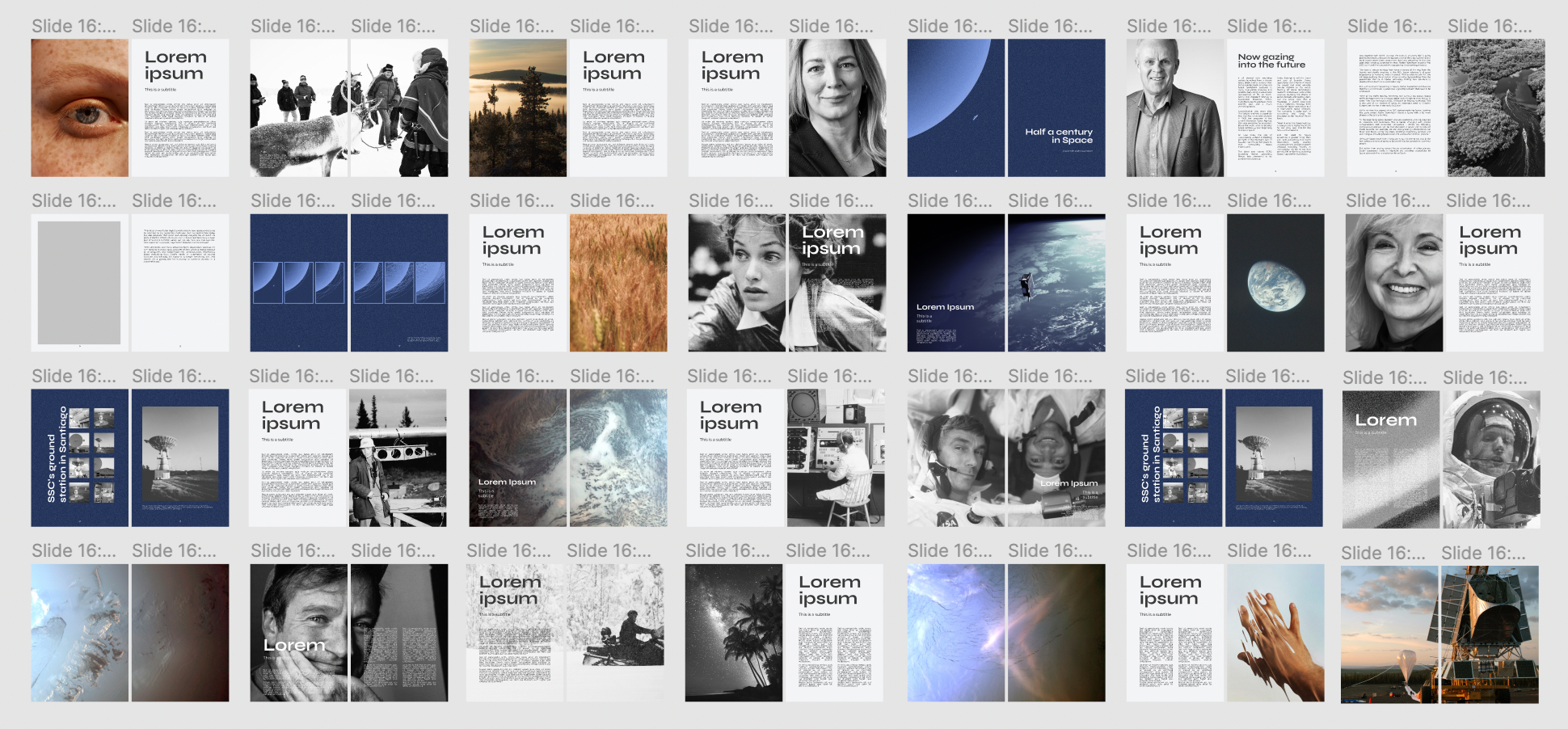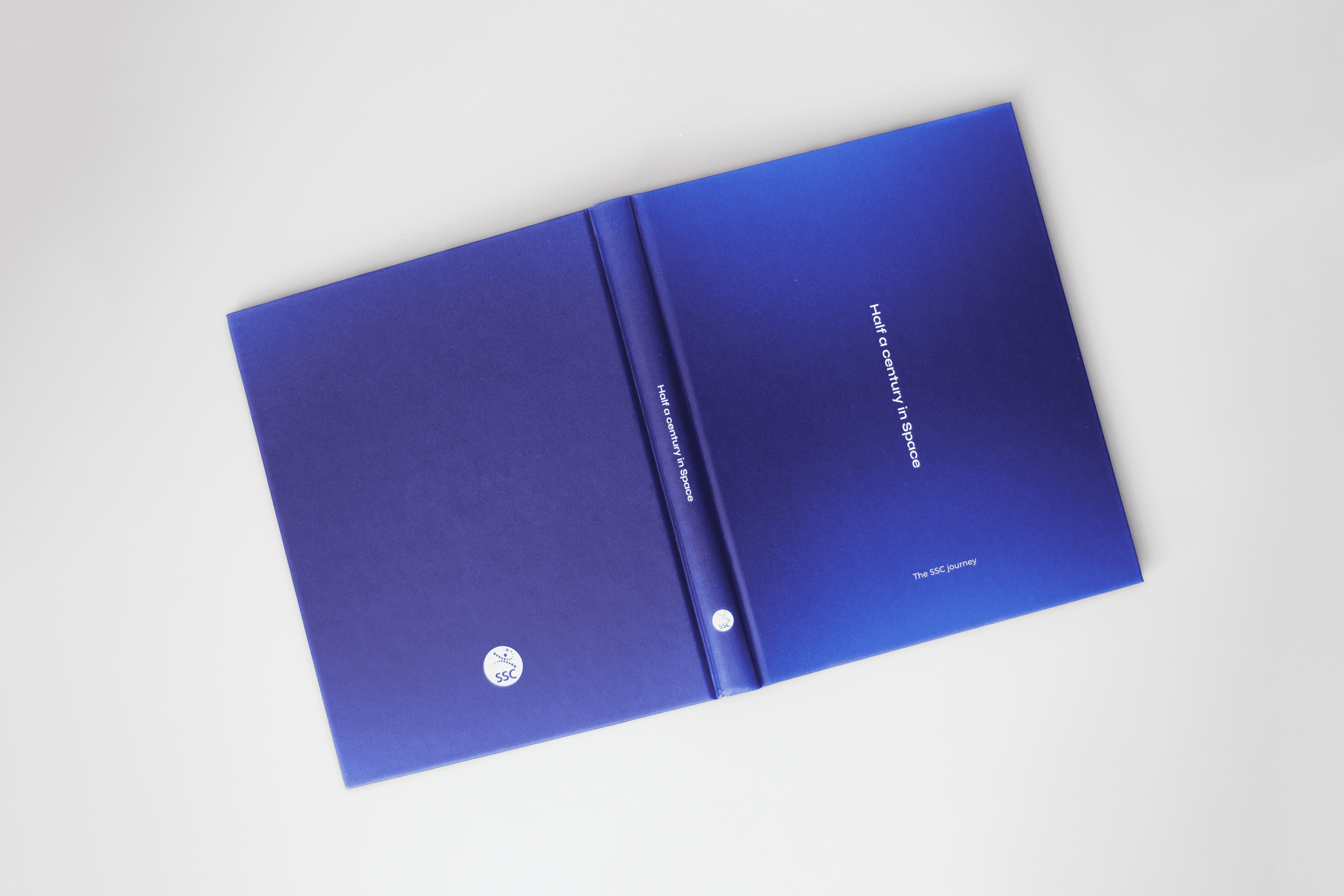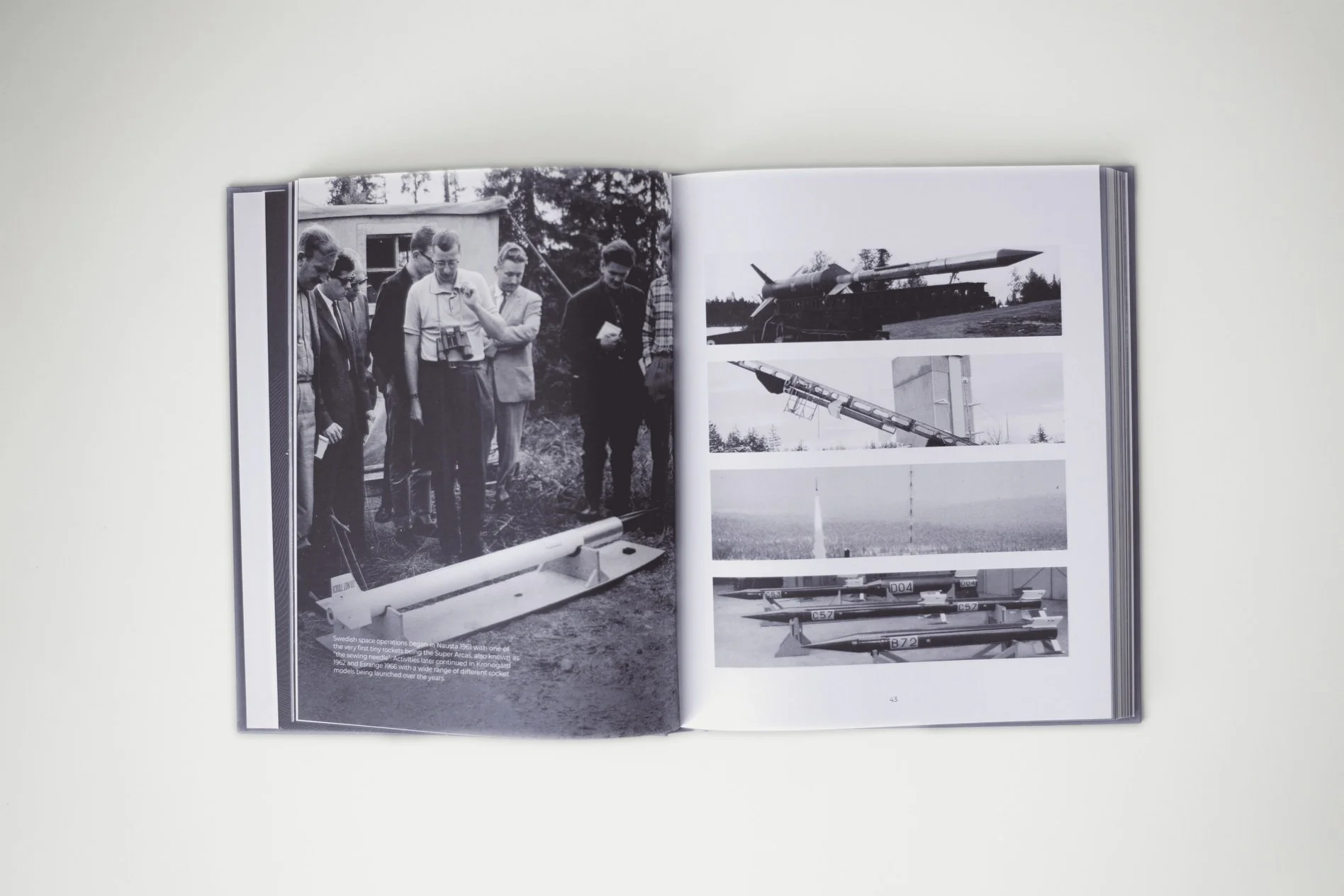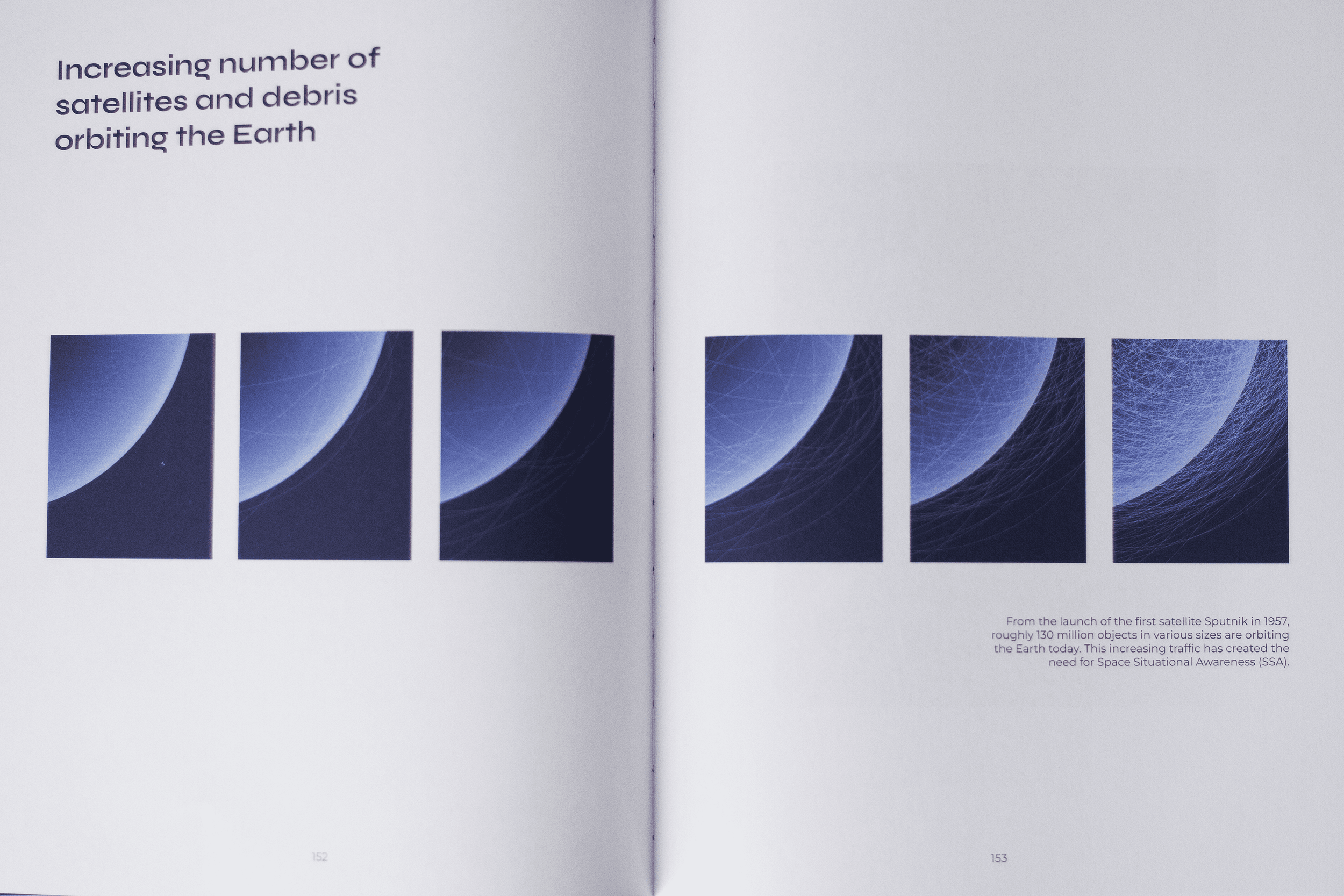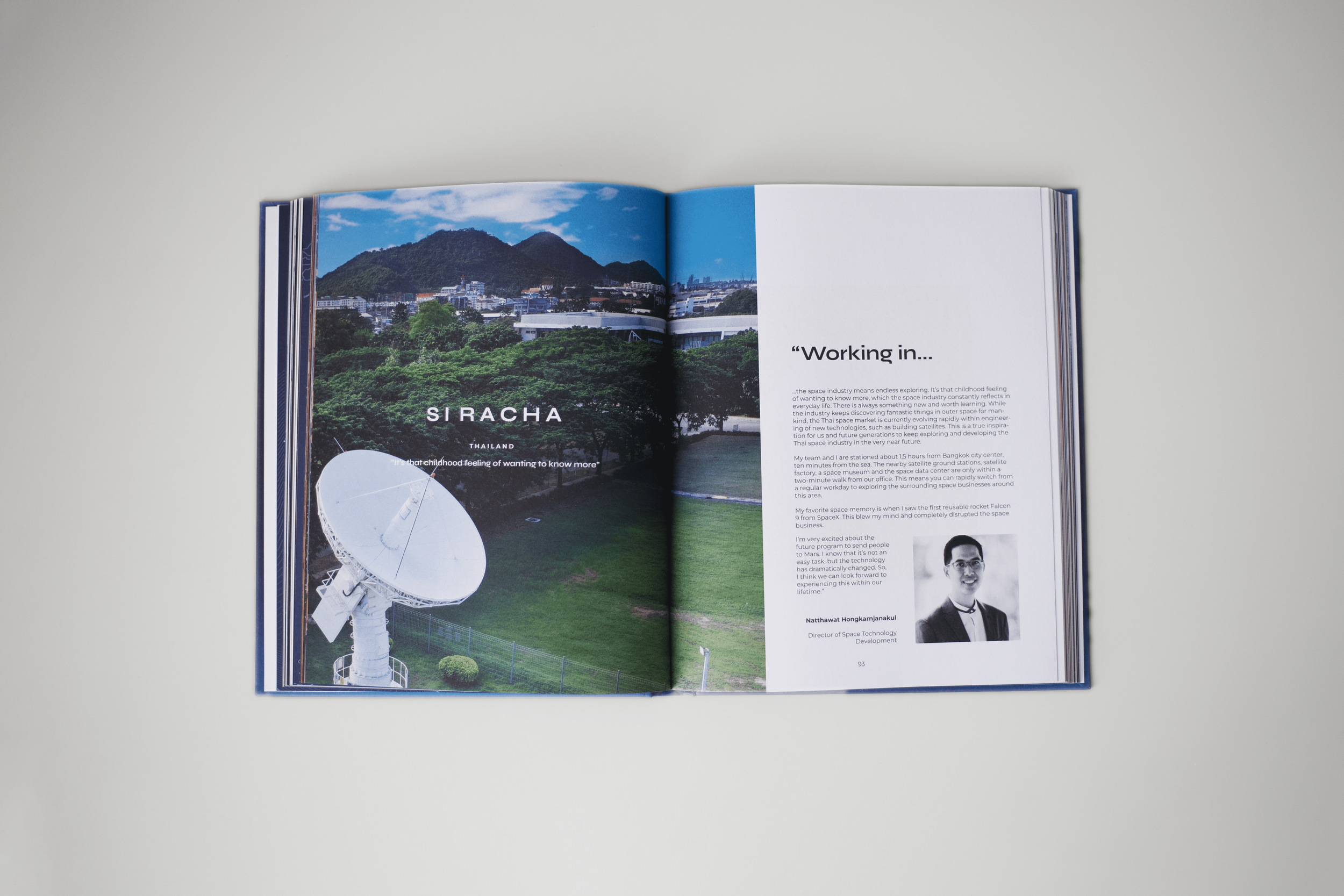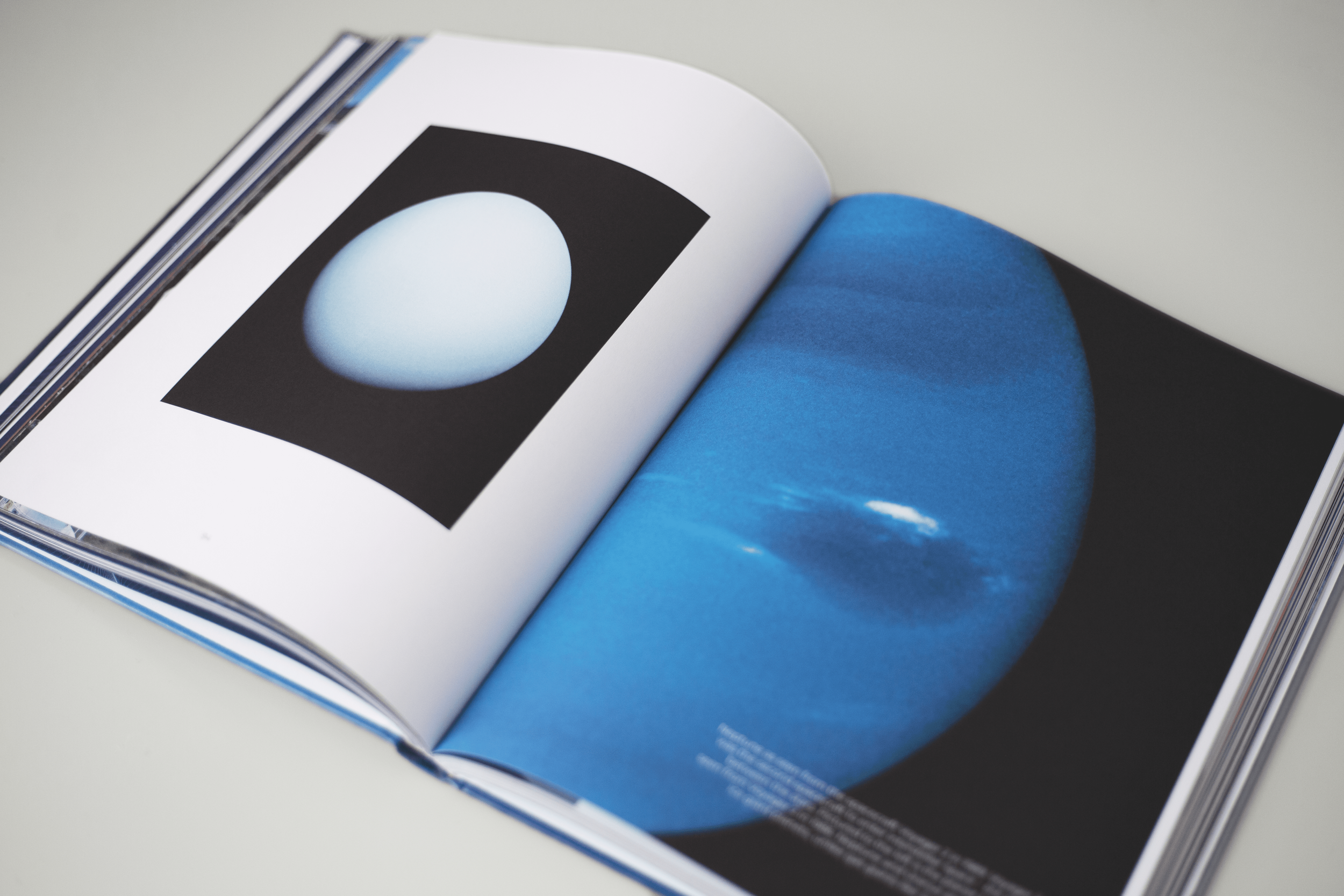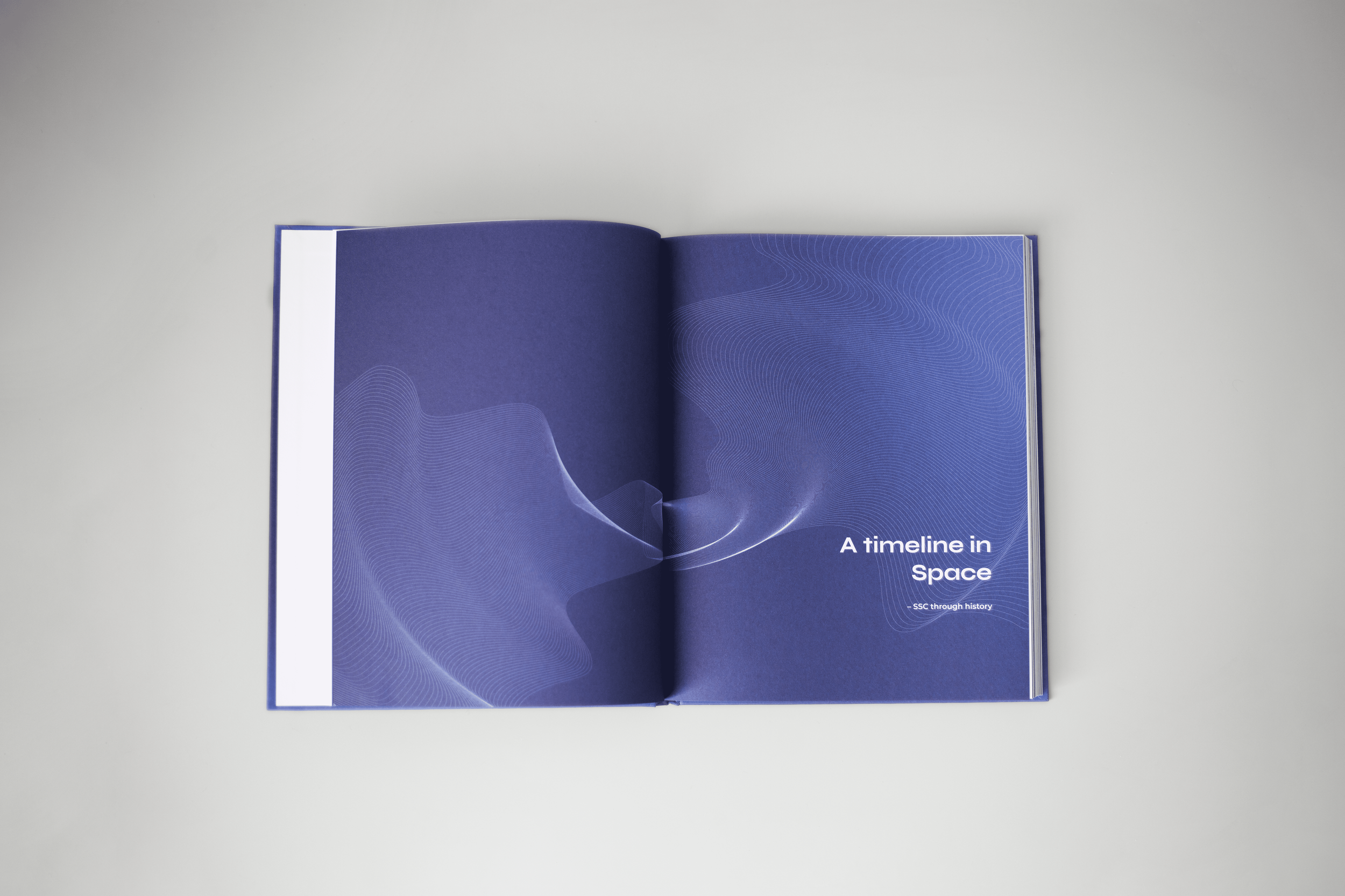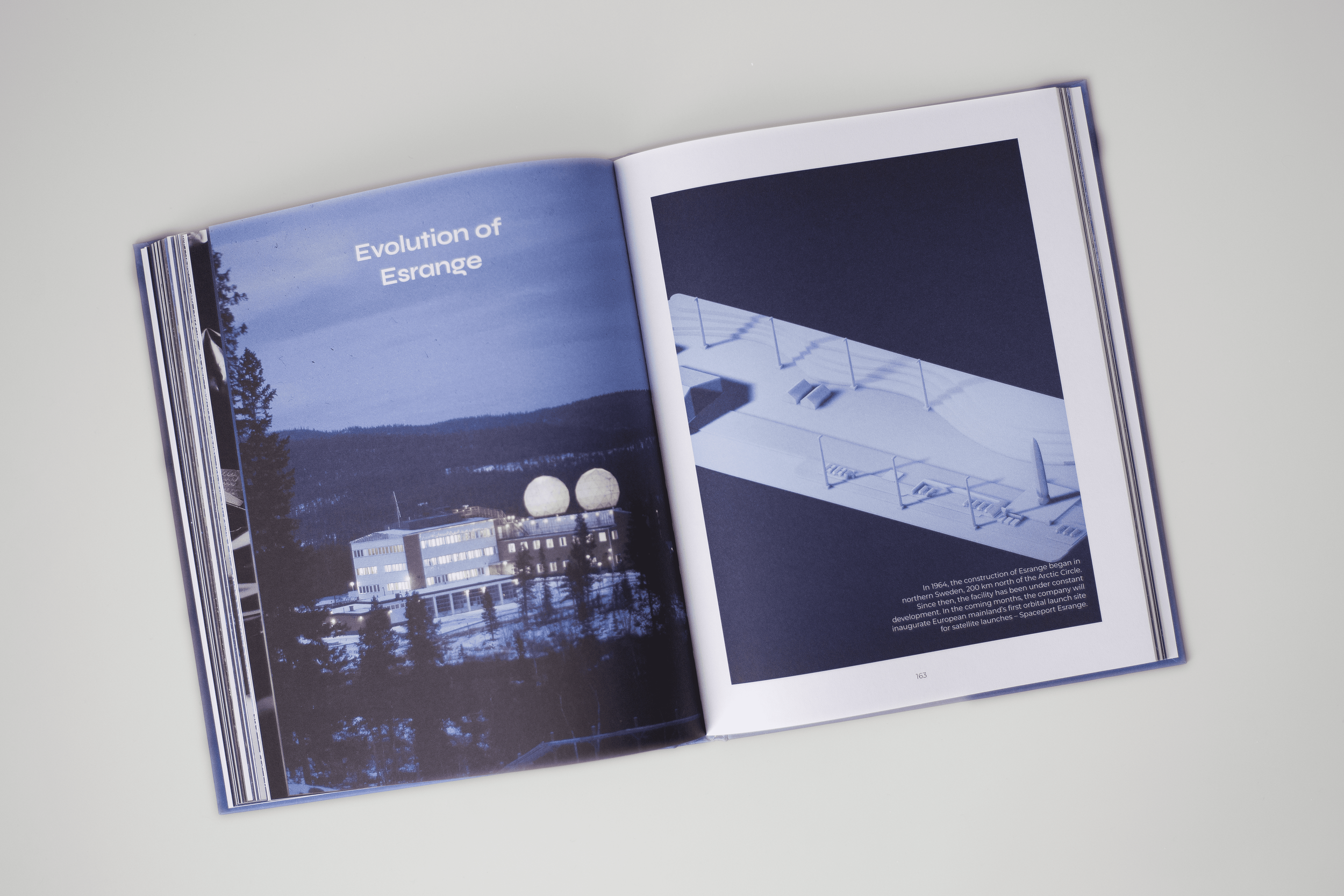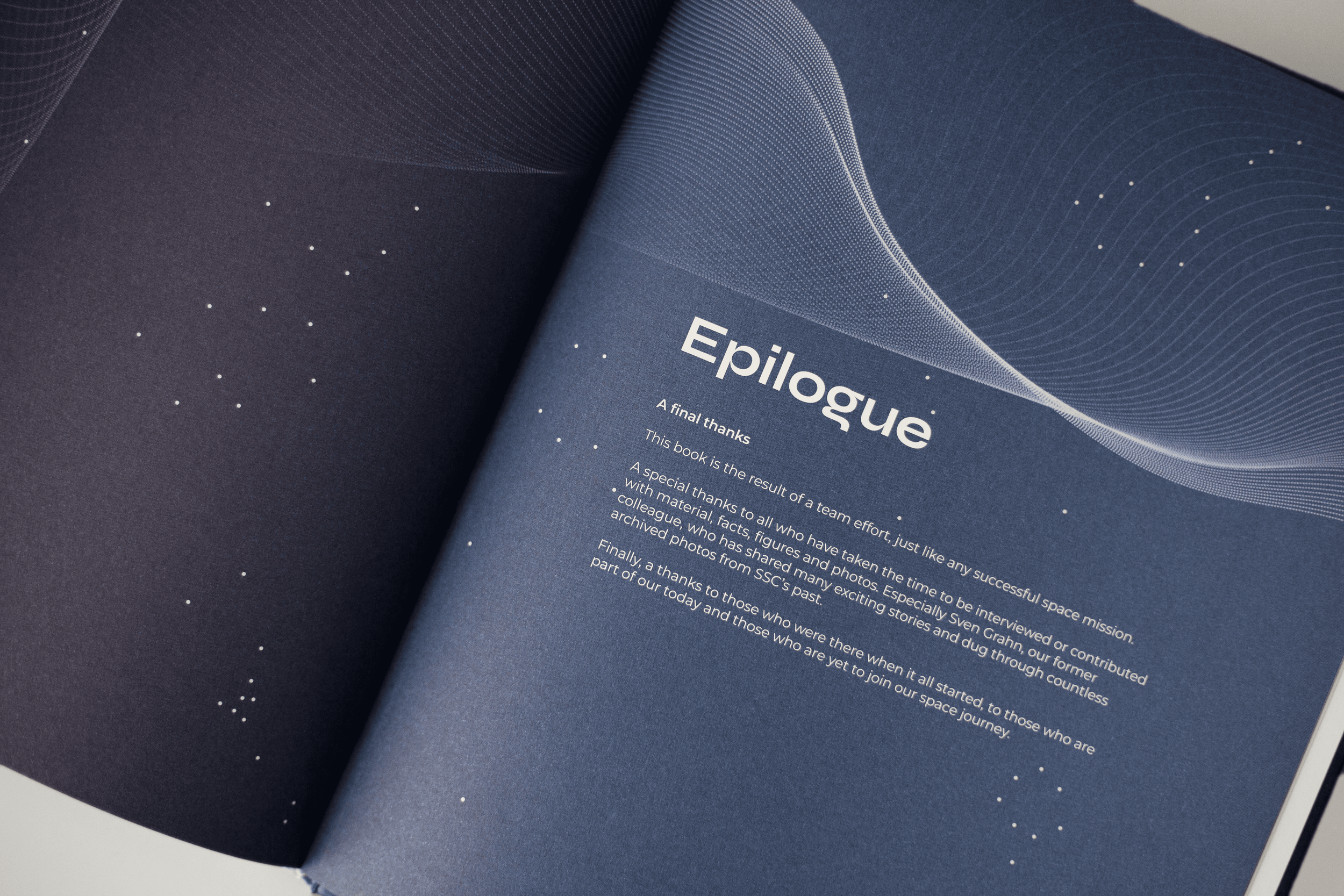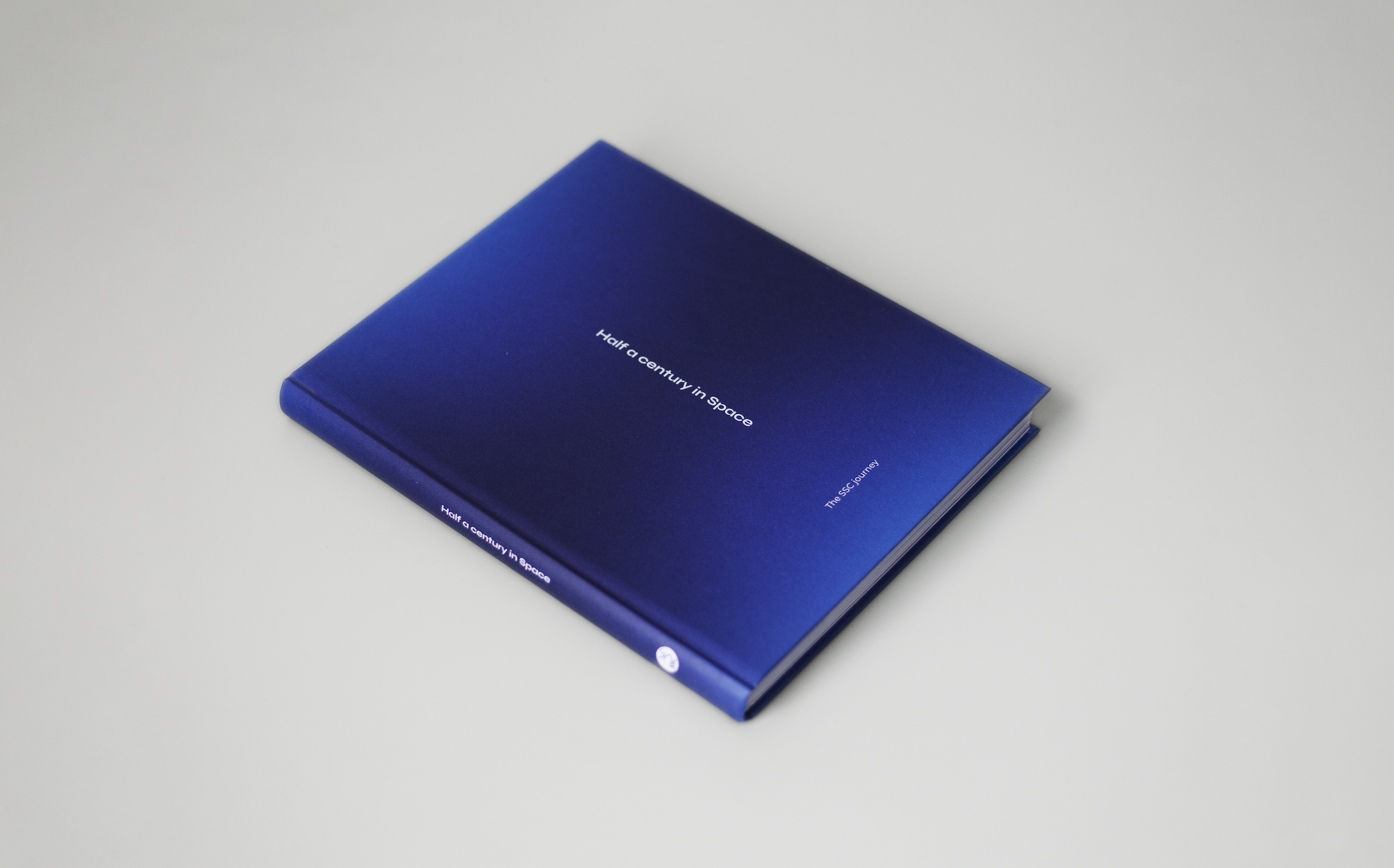Half a century in Space
The project:
During 2022, Swedish Space Corporation celebrated fifty years of being in business. We wanted to celebrate and commemorate this year by creating a 200 pages long coffee table book, with the main purpose of being a token of pride to the employees- as well as an informational product for customers. I was entrusted with the honor of Art Directing the entire project.
Swedish Space Corporation (SSC) is a company which provides space subsystems, space and satellite operations, rocket and balloon systems including experiment equipment, launch services, aerospace engineering services as well as airborne maritime surveillance systems.
From its facility Esrange Space Center in Northern Sweden, SSC launches sounding rockets and high-altitude balloons for research in the areas of microgravity, astrophysics, astronomy and atmospheric studies. Besides Esrange, SSC has 16 sites located globally, and recently gained the ability of being the first European mainland spaceport for launching satellites in orbit.
Clients range from NASA, CNES, SpaceX, ESA, to many more.
Inspirational bookshelf, my team at Spaceport Esrange, Kiruna, and post it mayhem.
Beautiful views at Esrange for a project-workshop and an unfortunate photo of me in a hardhat.
Receiving example prints on different papers, more post it mayhem and a beautiful inspirational coffee table book.
Responsibilities:
My role as an Art Director for this project was to create a visually striking and engaging publication. I was involved in every part of the the process, from ideating the concept to printing the actual book. I was head of everything from workshops together with stakeholders to gather the information needed for the project, to wire framing, photographing, designing, layout, illustrating and managing the originals for the publication.
My key responsibilities were amongst others to:
Develop the overall creative vision and concept for the book, in collaboration with the copywriters and other stakeholders. This would involve determining the overall look and feel of the book, as well as the tone and messaging that it will convey.
Lead the creative process as a sole designer to create visual mock-ups and prototypes of the book, in order to present ideas and get feedback from the client and other stakeholders.
Rely on self sufficiency to create the final layout and design of the book, including choosing typography, color schemes, imagery, and other design elements that will help to bring the book to life and make it visually appealing and engaging.
Oversee the production process to ensure that the book is produced to the highest possible standards, including working with printers, paper suppliers, and other vendors to ensure that the book meets all quality and budget requirements.
Collaborate with the creative team and ensuring that all team members have the resources they need to be working efficiently and effectively to meet project deadlines. This included delegating tasks, providing guidance and assistance- as well as asking for help and support when I needed it.
Communicate with all stakeholders throughout the project to ensure that the book meets their expectations and that any issues or concerns are addressed in a timely manner.
Overall, I was responsible for leading and overseeing the creative direction of the project, and for ensuring that the final product was visually stunning and effective in telling the company's story and celebrating its fifty years in business.
Initial mockup in Figma.
Strategising the project:
Since this project was pursued with a small budget, tight deadline and very few people, we had a number of strategies we used in order to maximise the resources and achieve our goal.
Some of these strategies were:
Prioritise content: One key strategy was to carefully prioritise the content that is included in the book, in order to ensure that only the most essential and impactful information is included. This involved working with different stakeholders to identify the key messages and stories that the book should convey, and then focusing on these elements in order to create a cohesive and effective final product.
Use existing materials: Another strategy was to rely on existing materials as much as possible, rather than creating new content from scratch. This included using historical photos and documents that were already available.
Streamline the production process: To make the most of a small budget and limited time, it was important to streamline the production process as much as possible. This meant working with vendors who were able to provide high-quality products at a reasonable price, as well as minimising the number of rounds of revisions and edits that were needed in order to get the book to its final form.
Use technology and tools to our advantage: Finally, there were a number of digital design tools and technologies that helped us to make the production process more efficient and cost-effective, even with a small team. For example, the use of cloud-based design tools and collaboration platforms made it easier for us to work together and share files, even if we weren’t in the same physical location. We worked mainly in InDesign, Figma, Photoshop, and InCopy. An example of one of the design tools used is amongst other the double diamond.
The double diamond, a strong design tool I often use during my processes.
Even though we used all these strategies, we of course faced some hinders. Amongst others not receiving photos and texts in time, not having enough material to work with, not having “enough” budget (for the vision we initially had), and all of us being involved in a multitude of other projects whilst pursuing this one.
We solved these hinders with different means. For example, we sourced a lot of stock photos, I used some of my photography skills to create new content instead of us hiring a photographer and I also did a lot of illustrations to tie the book together conceptually in a budget friendly and simple way. By focusing on efficiency and resourcefulness, it was possible to successfully create a high-quality coffee table book even with a small budget, little time, and few people.
Book release. Everyone was encouraged to sign a copy of the book which now lies in the reception of the head office in Solna, Sweden.
Impact:
The reactions to the book has been overwhelmingly positive. We have received showers of compliments and everyone who were gifted a book were very grateful. I believe we established a sense of pride and accomplishment, especially since we involved so many employees in the project. Since this book was an internal product, not meant to be sold for commercial purposes, we could really focus on the employees 100%. I think that seeing the company's history and achievements documented in a coffee table book might help to reinforce a sense of pride and help employees to feel more connected to the company's mission and values, to feel like they truly are helping Earth benefit from Space.
Here are the results:
The cover of the book is a portrayal of different moments in time. It is partly a visualisation of a cell division, symbolising the life on earth and the role that space plays in that. It is also two stars colliding, overlayed with a grainy effect embodying the background cosmic radiation noise, and a rocket (the text) gong from earth- out on a journey.
Archival rocket imagery from Nausta, Sweden.
Original illustration by me, visualising the reason to why SSA will play a big role in the future of the space industry.
Archival image of Esrange and 3D model by me.





